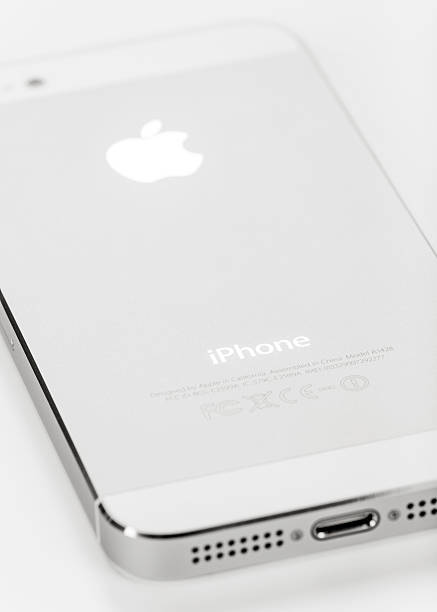Apple iPod Nano, 7th Generation
The iPod Nano is quite possibly one of Mac’s most notable and well-known compact medium players. First presented in 2005 as a trade for the iPod Scaled down, the Nano went through a few plan emphases throughout the long term, mirroring Macintosh’s ceaseless development.
Presently on its Apple iPod Nano 7th Generation, the Nano proceeds with the tradition of being a minuscule yet strong music player. In this article, we will investigate the Apple iPod Nano 7th Generation and analyze how it developed past renditions.

The First Nano-Heritage
This minuscule structure factor put it aside from bigger, bulkier players at that point. The Nano’s conservative and moderate plan made it simple to wear during exercises and different exercises. It immediately became famous with dynamic, in-a-hurry music audience members who needed a thin and lightweight player.
Over the course of the following few years, the Nano steadily embraced new highlights like various tones, a camcorder, FM radio, and a clasp plan. Be that as it may, the center spotlight stayed on scaling down and versatility. Going into the Apple iPod Nano 7th Generation, the Nano heritage is based on conveying large music stockpiling in a small, wearable bundle.
Apple iPod Nano 7th Generation: Significant Changes
At the point when the Apple iPod Nano 7th Generation was delivered in 2012, it proceeded with the pattern towards small size while rolling out a few critical improvements:
New aluminum unibody plan: The seventh generation Nano was built from an anodized aluminum unibody, giving it a strong and consistent feel while expanding strength. The packaging shielded the gadget from imprints and scratches.

A bigger 2.5-inch multi-contact show Past Nanos had little screens and snap wheels for routes. The seventh generation highlighted an enormous, splendid 2.5-inch multi-contact display with a refreshed UI for a more straightforward route through tapping and swiping.
Bluetooth support: Interestingly, the Nano included Bluetooth 4.0 for remote earphones and speakers. This gave clients greater adaptability while paying attention to their music in a hurry.
Lightning connector: The seventh generation Nano changed to the new Lightning port for adjusting and charging. This supplanted the old 30-pin connector utilized on more seasoned iPods.
Widescreen video playback: Because of the bigger showcase, the seventh generation Nano could now play video in a 16:9 widescreen perspective rather than just representation direction.
While holding its picture as a smaller music player, the seventh-generation Nano exhibited Apple’s endeavors to modernize the line with contemporary elements and capacities. The touch show, Bluetooth support, and new lightweight packaging carried the Nano into what’s in store.
Music Playback and Capacity
In spite of the progressions and updates, music playback remained vital to the Apple iPod Nano 7th Generation’s plan and capability. Accessible in 16-GB models, it provided more than adequate, top-notch stockpiling for a huge number of melodies in a compact bundle. Upgraded sound hardware conveyed fresh, adjusted sound through earphones. The Nano additionally included famous iPod music playback highlights like:
Computerized volume controls
Adjuster presets
In a hurry, playlists
-Mix modes
Support for different sound configurations
Clients could, without much of a stretch, sync their music libraries from iTunes and access tunes through the updated UI. By and large, the Apple iPod Nano 7th Generation found current assumptions for music players while holding the center qualities of high stockpiling limit and extraordinary sound quality.
Wellness Highlights
Notwithstanding music playback, the Apple iPod Nano 7th Generation provided food explicitly to wellness fans. The Nano incorporated a refreshed pedometer application for counting steps and following the distance traveled. Clients could lay out objectives, view action chronicles, and screen their advancement while practicing with the Nano.
The Bluetooth support additionally permitted the Nano to interface remotely to pulse screens and other Bluetooth wellness adornments. This empowered sprinters, cyclists, and others to screen biometric information during exercises. The strong, lightweight packaging was appropriate for dynamic use, engrossing shocks and sweat without harm. With these improved wellness features, the seventh-generation Nano addresses an optimal running buddy.

Final Words
At the age of seven, the iPod Nano advanced from a fundamentally versatile music player to an all-the-more-complete gadget. The seventh generation Nano denoted a significant update that brought present-day capacities like a touchscreen, Bluetooth, and video playback while holding the notoriously reduced structure factor. It carried on the Nano heritage by giving liberal music stockpiling in a little bundle.
For some clients, the Apple iPod Nano 7th Generation hits the perfect balance between size, usefulness, and convenience. It exhibited Apple’s obligation to further develop a generally darling product offering. Almost 15 years after its underlying delivery, the iPod Nano’s equation of power and transportability in one little gadget stays engaging and significant.
FAQs
What are the new elements of the Apple iPod Nano 7th Generation?
The Apple iPod Nano 7th Generation has a bigger 2.5-inch multi-contact screen, Bluetooth support for remote earphones and speakers, a Lightning connector, video playback capacities, and another aluminum body. Additionally, it has a refreshed pedometer for wellness tracking.
How much capacity does the seventh-generation Nano have?
The Apple iPod Nano 7th Generation is accessible in a 16GB stockpiling limit model.

